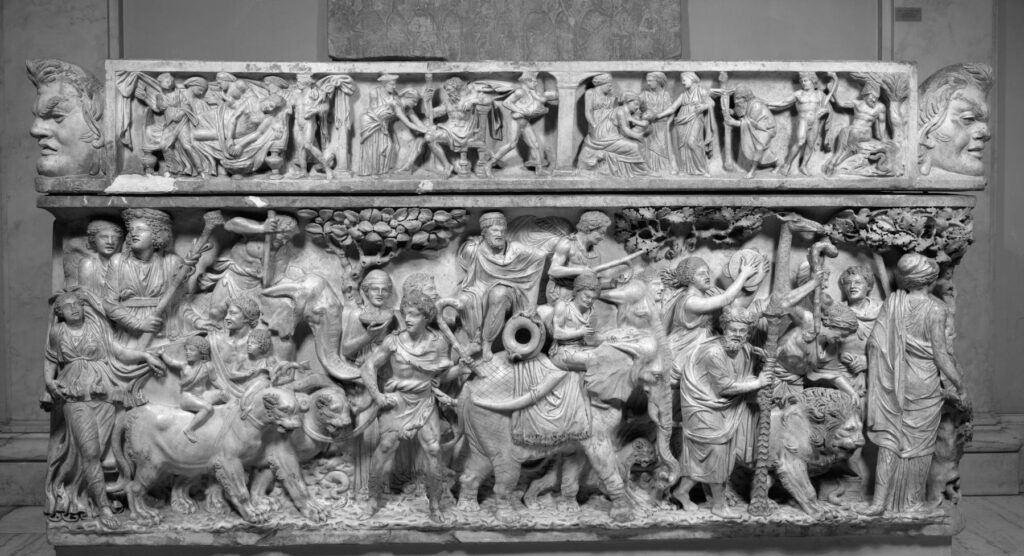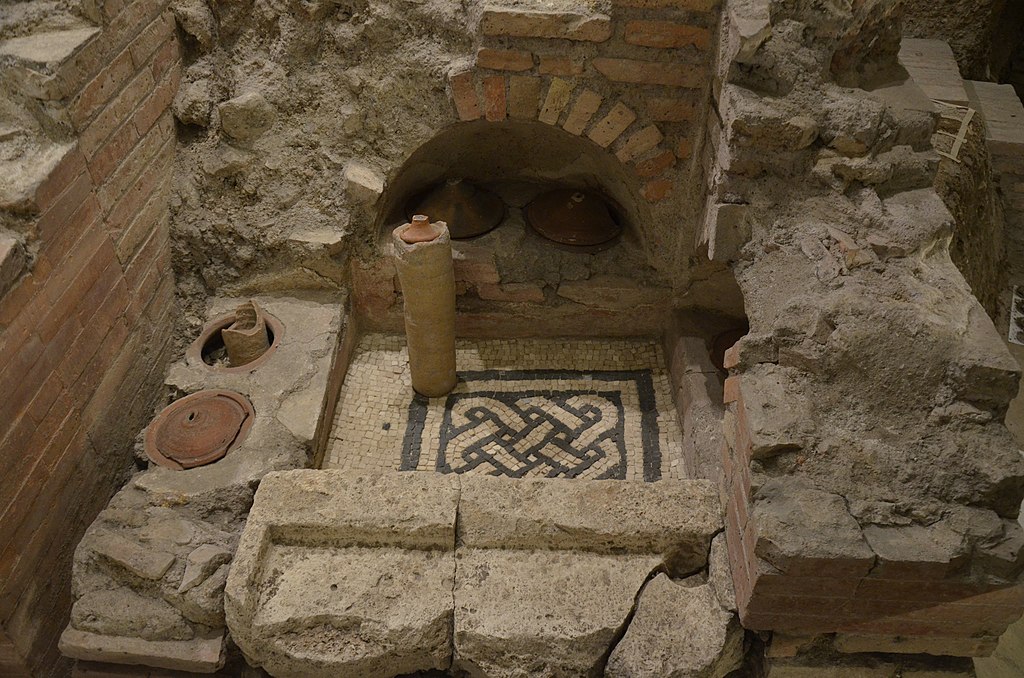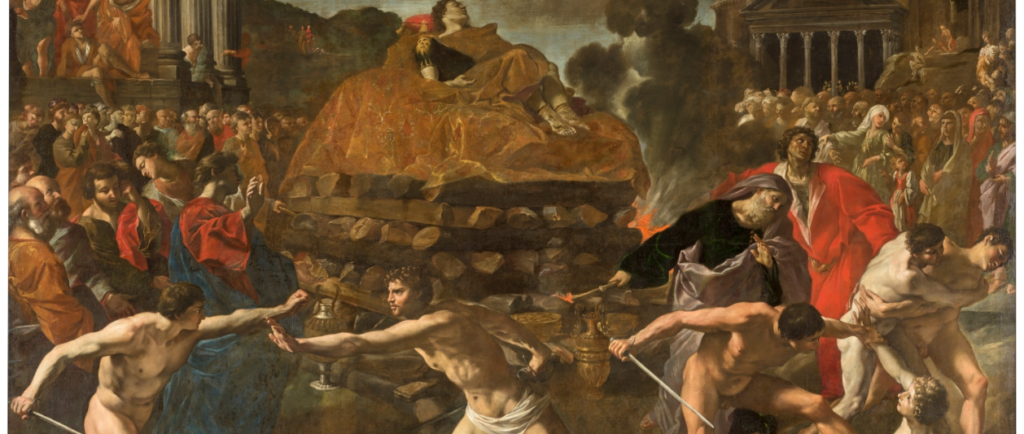Written by Lauren Groff, Contributing Writer, Classical Wisdom
The Romans had an enormous reverence for their ancestors and for death itself. What were their beliefs and customs surrounding the passing and burial of their loved ones?
Belief In the Afterlife
It was exceedingly important for the Romans to leave an enduring memory of themselves behind and one way they did this was by building elaborate tombs. They also demanded that family members have a feast in their honor on the tomb, so they would always be remembered. Some men ensured their memory by establishing funds of money, the interest from which was used for specific activities such as offering an annual feast for the people of their hometown.
Burial and Cremation
From the creation of Rome until about the mid-2nd century AD, cremation was the most common burial rite. The deceased would be taken to Rome’s necropolis (“city of the dead”) and placed upon a burning pyre. The ashes and remaining bone fragments were interned in a funerary urn. It was believed that the deceased’s “shade” (spirit) had not crossed the River Styx (the river that takes one from the World of the Living to the World of the Dead) until the body had been interred.
From the mid-2nd century on, burial became the preferred method of funeral rite. The deceased was placed inside a sarcophagus, which was often richly decorated. They were buried without their possessions, unlike other Mediterranean cultures.
Burial Clubs
Not everyone could afford a sarcophagus, however. Rome’s poorest were often tossed into pits called puticuli, meaning “to rot or decompose”. These pits held a mixture of human remains, animal corpses, garbage, and excrement. Some of them were large, containing 24,000 corpses each.
This wasn’t the best way to be buried, so anyone who could afford it would join a burial club. A burial club was a group that charged monthly dues and if one of the members died, you would pool the clubs money to bury that member. A fee of 100 sesterces was required to join, and new members were sometimes required to bring a jar of wine. Some of these clubs had a mixed membership of slaves and free people. If someone committed suicide, however, this person was considered to have forfeited his right to a funeral. Burial clubs had elaborate rules governing member functions.
Tomb Building
The heirs of the deceased were responsible for the construction of their loved ones’ tombs. There were often stipulations on how the tomb was to be constructed or that the heir would not receive their inheritance until the deceased was buried in the specified manner. Many heirs resented this and included their names on the constructed tombs, sometimes taking up more prominence than the deceased relative themselves.
Funerals in Ancient Rome
A funeral began with a procession to the burial place. The corpse was carried in a bier (a bed-like tray). The procession was a loud and raucous affair. The wealthier and more famous the deceased was in life, the more ostentatious the funeral procession would be, with more musicians, actors, and even mimes. Professional mourners were hired to participate in the procession, ripping their hair out and wailing. The more professional the procession, the wealthier the deceased had been in life.
Eulogies
If the deceased had been an important member of state or had made a strong impression their family, then an eulogy for the deceased would be delivered. Many examples of eulogies have survived to this day.
Feast
The ancient Romans loved a feast, and funerals were no exception to this rule. It was a common practice to have a ritual feast after the cremation or burial of the deceased. Burials and funerals in Ancient Rome were an important part of Roman culture. Honoring one’s ancestors and remembering those that came before them was important to them.
Lauren Groff is a history writer at Essay writing service and Best custom writing services. She writes articles about Ancient Rome. She is also a blogger at Academized Review.















No comments yet. You should be kind and add one!
Our apologies, you must be logged in to post a comment.